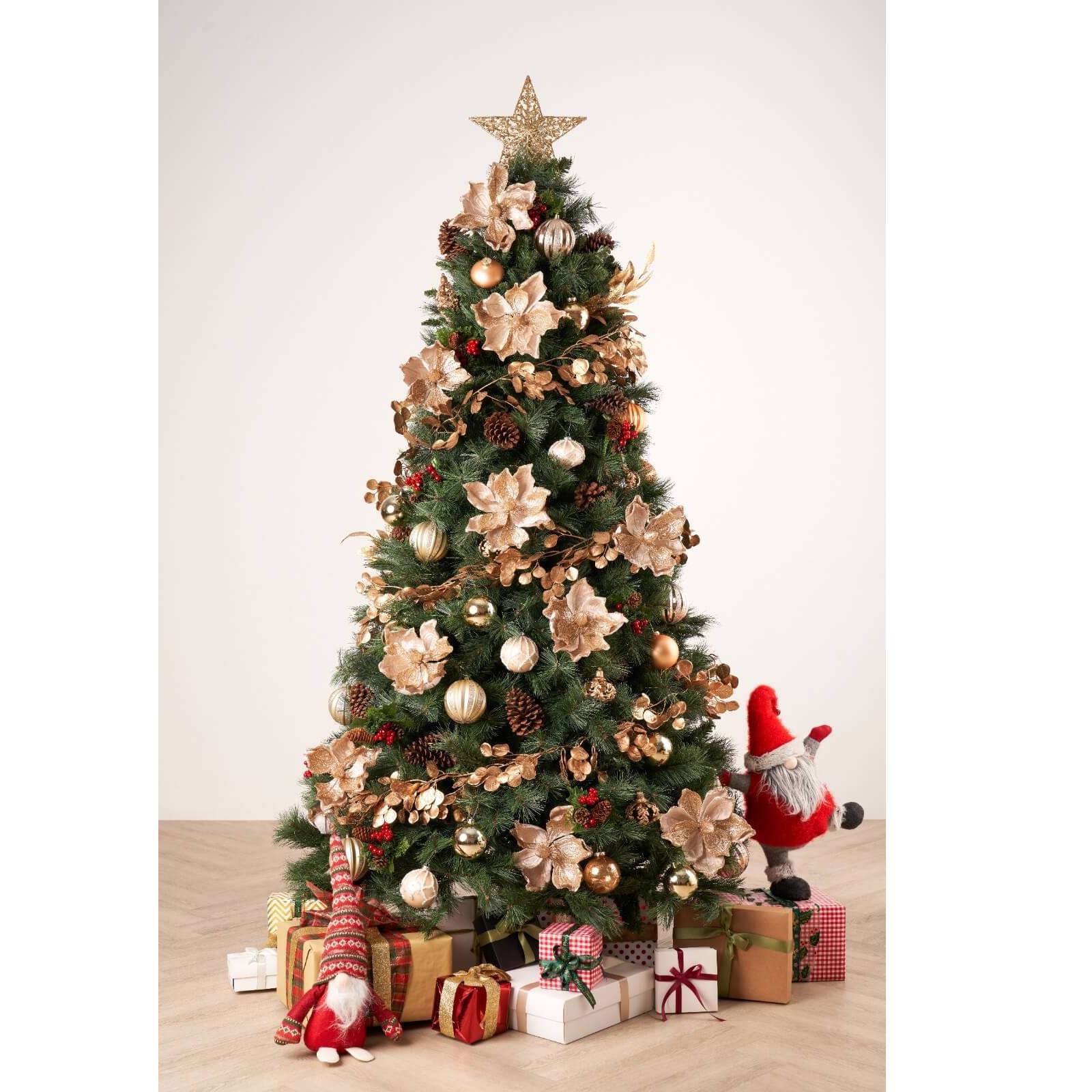The Christmas Blog
A Christmas Story: the Origin of CHRISTMAS TREES
The Origin of Christmas Trees
Christmas trees have been around for decades and even centuries that even our grandparents recall their great grandparents to have known about the tradition. Christmas was not the only occasion celebrated during Winter in old times – there were plenty of other Winter festivals that were conducted and the a tree was always used to symbolise these events. In olden times, the classic species of tree often used for these occasions was the Evergreen Fir. This tree was used for centuries by not just Christians, but by the other religious groups as well.
Delving more into the details of history
The reason why a tree was used to symbolise the winter festivals was due to a simple reason. Everyone used to decorate their winter trees, by adding ornaments and lights to its branches, to in a way remind them that the season of Spring is going to arrive soon after Winter. It was a way for them to keep going.
Although we don’t really know why specifically the Evergreen Fir was used as the first ever tree to celebrate these winter events and Christmas, we know that both Christians and Pagans were both involved in this tradition of decorating trees during winter for different reasons. They each had their own festivals during Winter but shared this common habit.
The habit is known to have come on more than thousands of years ago in the north of Europe. Surprisingly, the times when these trees were used as a festive decoration, they were used to be made hanging upside-down like a chandelier. Probably this is where our modern day idea of upside-down Christmas trees were formed from, in the name of being out of the box!
Other types of Christmas trees in practice
Soon, as the tradition spread across the continent, more types of trees were starting to being used. The more wealthy families could afford to have a few other types of trees, like Hawthorn or Cherry. Those using these trees would plant them into flowerpots and were kept inside the house to hopefully bloom during Christmas day.
Some who could not afford to buy a real tree made fake ones out of wood and filled it up with paper, fruits and candles to make it look real and alive. These trees were sometimes purposely made by those who were well to do as well, to resemble the Paradise Tree that was a representative of the Garden of Eden. This is because, in olden medieval times, the eve of Christmas was known as Adam and Eve’s day. The Paradise Tree replicas were also then brought around the town to advertise for plays that would be performed during Christmas season to educate those who could not read the bible.
It is interesting to know that it was part of the old tradition to sometimes carry the family’s Christmas tree around from one house to another during Winter visiting, rather than keeping it at their own homes!
How did it all start?
The first ever use of Christmas trees is debated to be at either of these two places: Estonia, at a town called Tallinn or Latvia, at a place called Riga. These two places both claim ownership for the first use of the Christmas tree, but at 1441 in the former and 1510 in the later. With the years we can obviously compare and tell who started the tradition first. However, in Riga, they have taken ownership for this practice and have a metal plaque fixed there with a label in more than 7 languages stating that they are the first ones to have started the tradition of Christmas trees there.
But at both of these places, the group of people who started this habit were from the same organisation of those days, called the Brotherhood of Blackhead. This was a group of people from Livonia who were single and were from specific jobs in the shipping and trading line of those days.
No one really knows what other rituals were associated with the display of Christmas trees except that they were placed right in the middle of the city and the members of the Brotherhood of Blackheads would then dance around the tree and eventually burn it. This is very similar to the another ritual of the “Yule Log”
What were the other rituals associated with the Christmas tree?
Overtime, more and more practices were associated with having the Christmas tree. Like for example, soon after the establishment of the practice in Riga, in Germany people used to bring the Christmas trees around the town with a man on a horse conducting the event. The man on the horse was said to represent St. Nicholas.
Soon after in the same century, it was the first time when the Christmas tree was brought into the house. The person who first did it was Martin Luther, who was famous to be a pious German. It is said that while he was walking through a dense forest at the night of Christmas eve, he saw the shining of the stars through the foliage of the trees so gorgeous that it reminded him that it was God who was shining through. He ran back home to tell this story to his wife and children and thought that Jesus had left the stars from heaven to visit Earth for Christmas and this is what he saw through the trees in the forest.
Many believe that the particular tree he saw was the one at Riga which started the tradition, but this is not true. The tree at Riga had been set up there a few decades ago and was at a different location apparently.
There is a parallel story to how the Christmas tree might have entered homes:
On a very cold and dry night of Christmas eve, a modest family of a forest worker were resting in their cottage around a bonfire to keep warm. They then came across a young homeless boy knocking on their door to seek shelter and the forest worker had brought him in, gave him food, washed him and gave him warmth along with his own children. Bestowed with this love, the next morning which was the morning of Christmas, the homeless boy had turned into Jesus and had went to their garden and took the nearest Fir tree to present to the family as a token of gratitude. It was also after this that it has been said the tradition of having Christmas trees entered homes.
Some other traditions around Christmas trees included the variations in the types of decorations used. In old days of Germany, the first few Christmas trees which were ever used were decorated with edible items. Such food items included gingerbread man, apples and other candies. Soon, glassmakers started making ornaments in the looks of food. Such ornaments are used until today, like the fake apples and candy canes we always see to hang on our Christmas trees!
The ancient practice also included placing a figurine of Jesus or baby Jesus right on the top of the tree. However, with time this figurine changed to including a fairy or a star at the top of the tree instead of Jesus himself.
Soon with how popular Christmas trees became, kings started using these trees to decorate their castles, many people sold drawings to publicise the use of the trees and the celebration of Christmas, things went viral on books and newspapers and the tradition started spreading all across Europe and the United States of America.
The story of tinsel and the Christmas Spider?
Tinsel was originally from Germany as well, and it was made with very lean bits of Silver that was beat. Soon, other materials like plastic were used to make Tinsel and then it gained more popularity as it was not so pricey anymore for a common man to afford as an ornament on his Christmas tree!
There is also a popular tale on how the Tinsel was actually created by the Christmas Spider.
There are many variations of this story but most of it have the same gist: There once was a very poor family who did not have enough money to buy ornaments to decorate their Christmas tree at home. So when the children in the house sleep during Christmas Eve’s night, a magical spider would appear and spin cobwebs around their tree. In the morning, with the sunlight, the cobweb would turn into gold and silver threads that line and decorate their tree. This was to reflect the love and affection everyone gets from god, be it the rich or the poor.
Some others say that it is actually Santa Claus who comes to turn the cobwebs into silver and gold, but we guess the essence of the story still remains the same. So in Germany and Ukraine, it is actually a sign of good luck if you find a spider or a cobweb on your Christmas tree! These are called “Pavuchky” and people even sell fake cobwebs as decorations to put up on your tree!
How about the light on Christmas trees?
In 1880, a hospital in Chicago had faced a very big fire accident because of the use of candles on Christmas trees. After being traumatised by the risk of fire of placing candles on Christmas trees, in the 1890s an American called Ralph Morris came up with the first electric Christmas lights. These are in use till today. Soon, in the early 1900s, insurance companies in America also led to a law being passed on the ban of using candles on Christmas trees. We think that this series of events have saved many more from potential fires that could have been started because of this habit!
Other popular records that Christmas and the trees hold
One of the most lit Christmas trees in the world is the one in Trafalgar Square in London, and this tree was given to United Kingdom by Norway as a token of thank you, for the help that England had given to Norway during the World War II.
The most number of Christmas trees lit at the same time was close to 200, 000 and this was done recently during the Christmas in 2010 at Belgium!
Artificial Christmas trees became popular from the 20th Century and it first started off with the use of Ostrich feathers to portray Christmas trees for some fancy fashionable parties for high flying celebrities. Having white trees was a fashion since the 1900, so don’t think that it is something new! Over time, plenty of different materials have been in use for artificial trees. It started off with bird feathers, then to paper mache, leading up to using high end metal or glass, and now down to different types of plastic. There are even inflatable trees made nowadays!
The tallest ever Christmas tree was 52 metres in height, and this definitely had to be artificial, covered in very realistic looking PVC tree leaves. This was called the Peace tree and was at Brazil from the Christmas of 2001 to 2002 at Vento Park.












